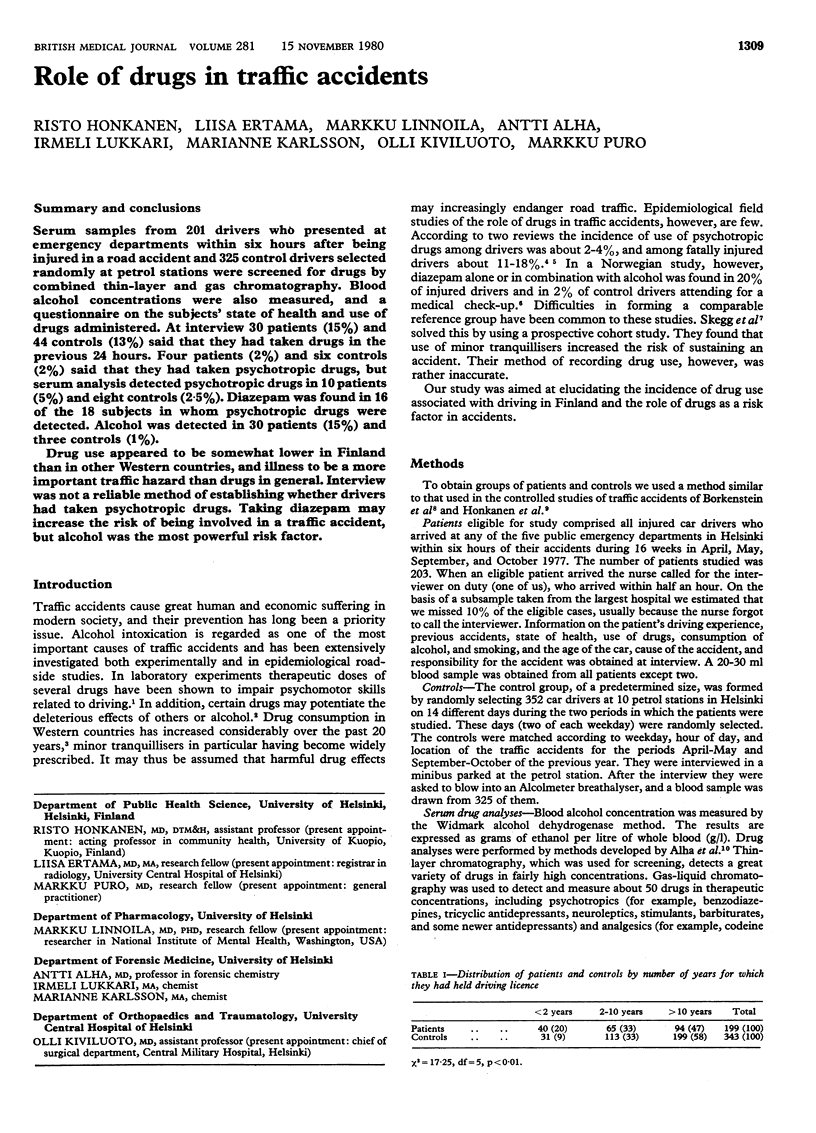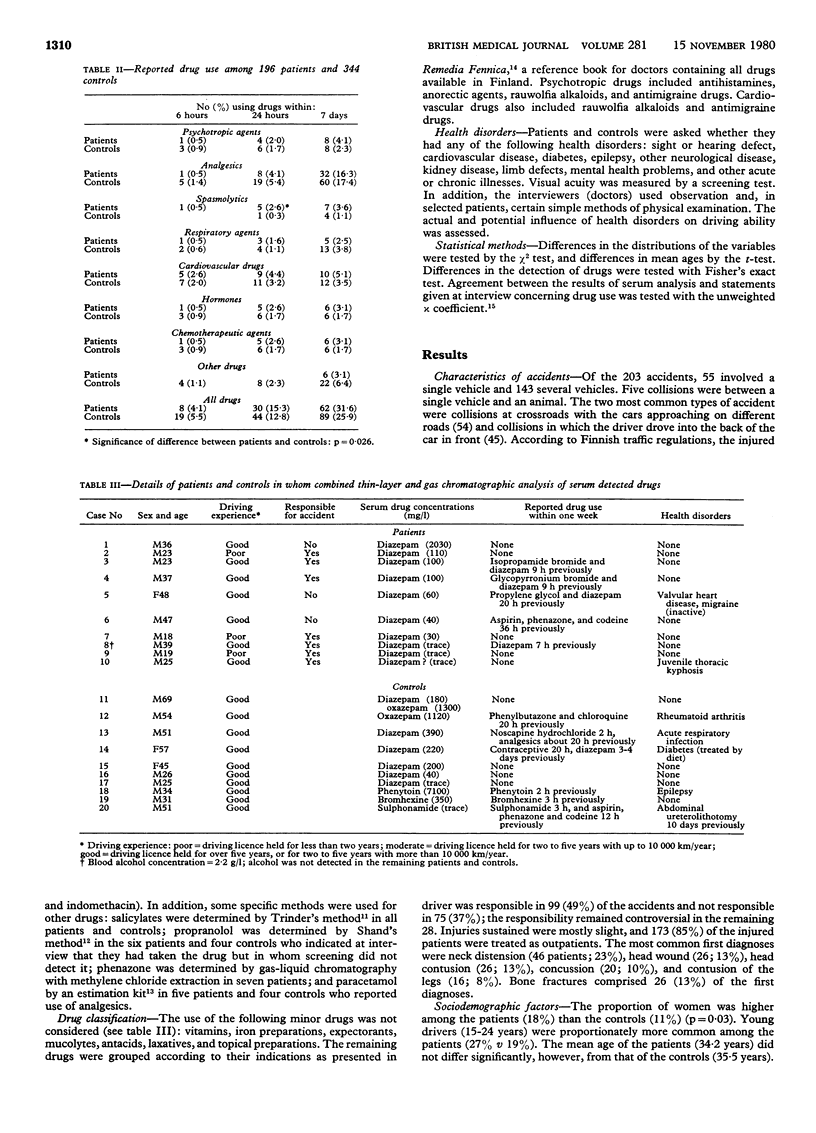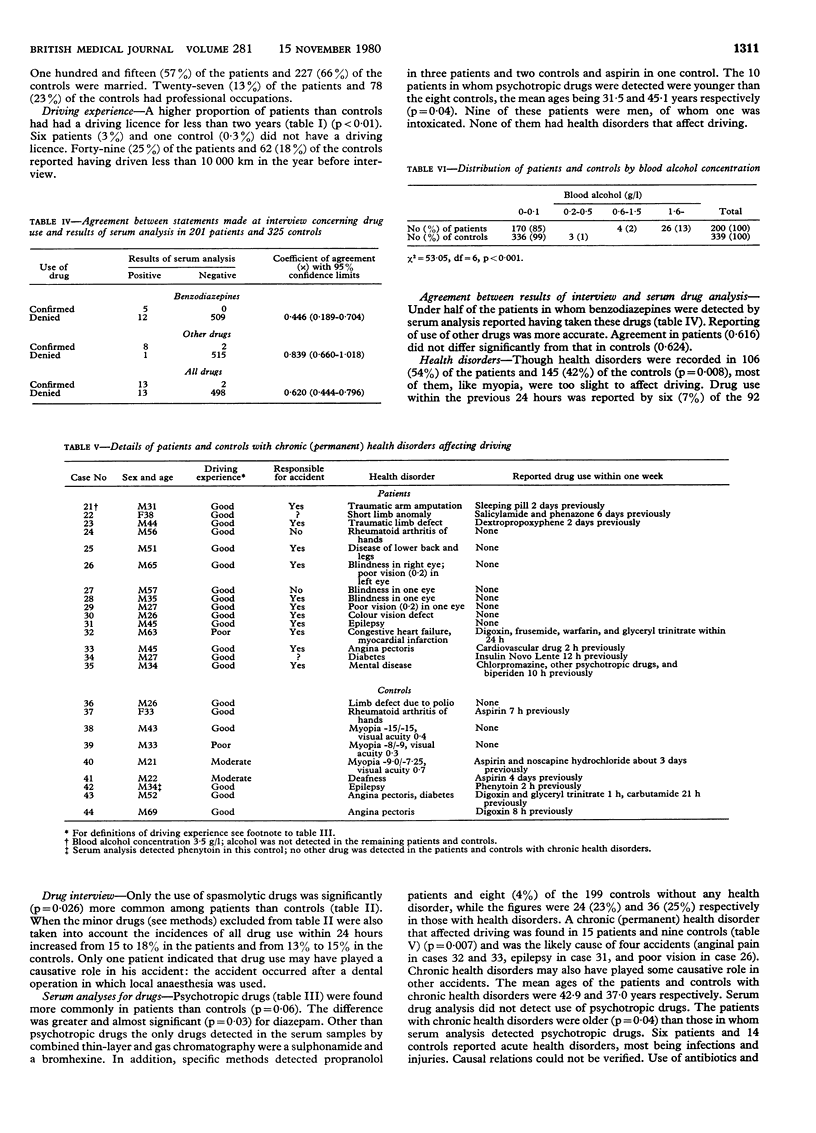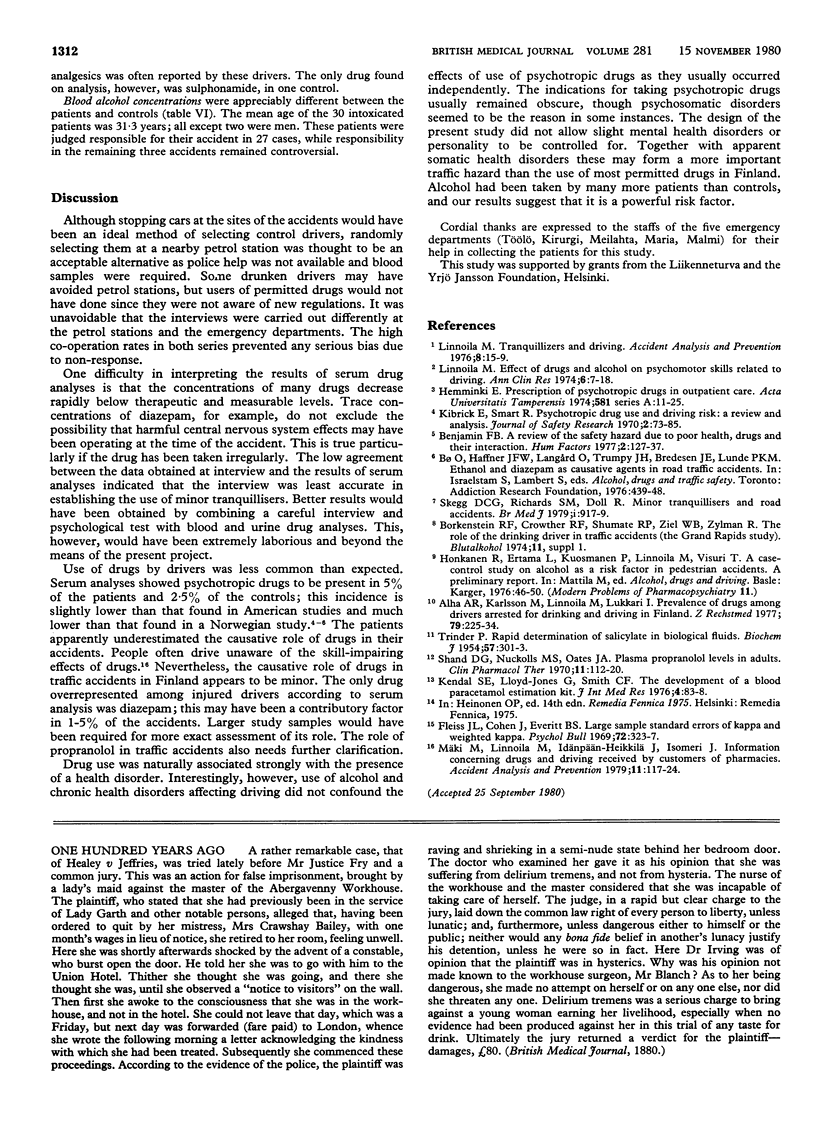Abstract
Serum samples from 201 drivers who presented at emergency departments within six hours after being injured in a road accident and 325 control drivers selected randomly at petrol stations were screened for drugs by combined thin-layer and gas chromatography. Blood alcohol concentrations were also measured, and a questionnaire on the subjects' state of health and use of drugs administered. At interview 30 patients (15%) and 44 controls (13%) said that they had taken drugs in the previous 24 hours. Four patients (2%) and six controls (2%) said that they had taken psychotropic drugs, but serum analysis detected psychotropic drugs in 10 patients (5%) and eight controls (2.5%). Diazepam was found in 16 of the 18 subjects in whom psychotropic drugs were detected. Alcohol was detected in 30 patients (15%) and three controls (1%). Drug use appeared to be somewhat lower in Finland than in other Western countries, and illness to be a more important traffic hazard than drugs in general. Interview was not a reliable method of establishing whether drivers had taken psychotropic drugs. Taking diazepam may increase the risk of being involved in a traffic accident, but alcohol was the most powerful risk factor.
Full text
PDF



Selected References
These references are in PubMed. This may not be the complete list of references from this article.
- Alha A. R., Karlsson M., Linnoila M., Lukkari I. Prevalence of drugs among drivers arrested for drinking and driving in Finland. Z Rechtsmed. 1977 Apr 18;79(3):225–234. doi: 10.1007/BF00200498. [DOI] [PubMed] [Google Scholar]
- Benjamin F. B. A review of the safety hazard due to poor health, drugs, and their interaction. Hum Factors. 1977 Apr;19(2):127–137. doi: 10.1177/001872087701900202. [DOI] [PubMed] [Google Scholar]
- Honkanen R., Ertama L., Kuosmanen P., Linnoila M., Visuri T. A case-control study on alcohol as a risk factor in pedestrian accident. A preliminary report. Mod Probl Pharmacopsychiatry. 1976;11:46–50. [PubMed] [Google Scholar]
- Kendal S. E., Lloyd-Jones G., Smith C. F. The development of a blood paracetamol estimation kit. J Int Med Res. 1976;4(4 Suppl):83–88. doi: 10.1177/14732300760040S415. [DOI] [PubMed] [Google Scholar]
- Linnoila M. Effect of drugs and alcohol on psychomotor skills related to driving. Ann Clin Res. 1974 Feb;6(1):7–18. [PubMed] [Google Scholar]
- Shand D. G., Nuckolls E. M., Oates J. A. Plasma propranolol levels in adults with observations in four children. Clin Pharmacol Ther. 1970 Jan-Feb;11(1):112–120. doi: 10.1002/cpt1970111112. [DOI] [PubMed] [Google Scholar]
- Skegg D. C., Richards S. M., Doll R. Minor tranquillisers and road accidents. Br Med J. 1979 Apr 7;1(6168):917–919. doi: 10.1136/bmj.1.6168.917. [DOI] [PMC free article] [PubMed] [Google Scholar]
- TRINDER P. Rapid determination of salicylate in biological fluids. Biochem J. 1954 Jun;57(2):301–303. doi: 10.1042/bj0570301. [DOI] [PMC free article] [PubMed] [Google Scholar]


